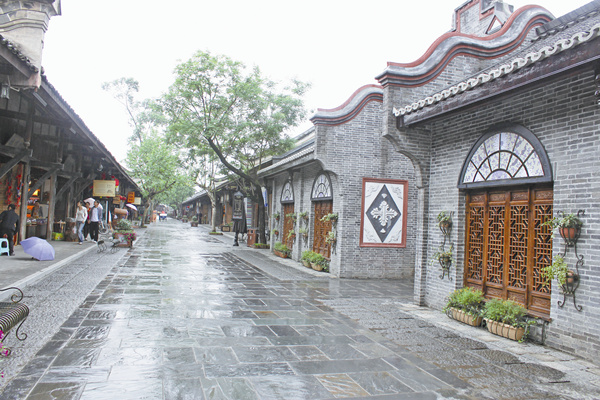 |
|
Small shops flank a street in Anren, a small town in Sichuan province. Photo provided to China Daily |
Anren is an ideal place to wind down and enjoy Sichuan snacks, but it is also a great place to immerse yourself in China's recent history, write Raymond Zhou and Li Yu.
People visit museums to get a taste of history, and they hang out at old towns to be immersed in history. Since the functions of these two kinds of places overlap somewhat, why not put one inside the other?
That is exactly the idea for Anren, a small town about an hour's drive to the west of downtown Chengdu, capital of Sichuan province.
China boasts thousands of charming little communities rich in heritage, but none has as many museums as Anren. The town, which has a population of 35,000, has 35 museums featuring more than 8 million pieces of collectibles, and more museums are being planned.
The number of residents is deceptive because the museums cater mostly to visitors. Last year more than 4.5 million people visited the town. The thing about Anren is, you don't feel like you're surrounded by museums. Rather, it has a theme park-cum-movie backlot feel. Instead of the humongous halls at State or province-level museums, those in Anren offer a ton of fun factoids, are thematically organized, and friendly to those with little historical knowledge.
For example, Jianchuan Museum is actually a cluster of 24 museums, each with its own theme and collection. It started with memorabilia from the War of Resistance Against Japanese Aggression (1937-45), and has been building on that theme, but later branched out to all kinds of collections. The one that touched a deep chord with me is the Museum of the 2008 Sichuan Earthquake, where everything is authentic and details of the ruins convey an immediacy that is typically lacking in most historical collections.
Not only does it display objects; it puts a human face on the disaster. The museum is also home to a pig that survived 36 days trapped in a fallen building. The pig is now so well fed it can hardly walk. It adds a much-needed touch of light-heartedness to an otherwise heavy topic.
There is also the oddity of a gallery devoted to bound feet, a practice that was outlawed a century ago.
|
|
|
|
|
|
|
|
